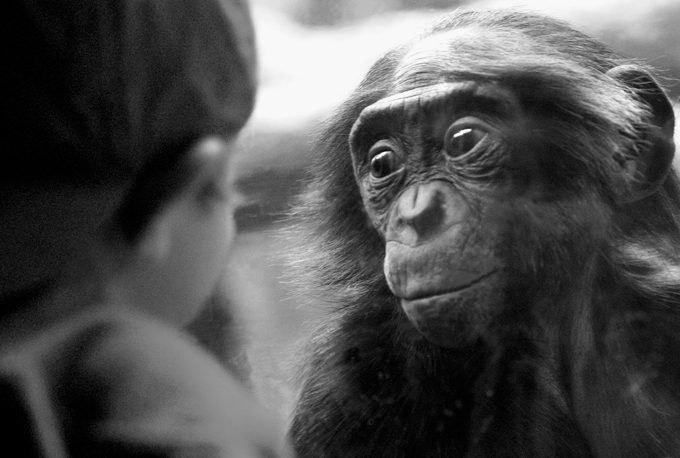
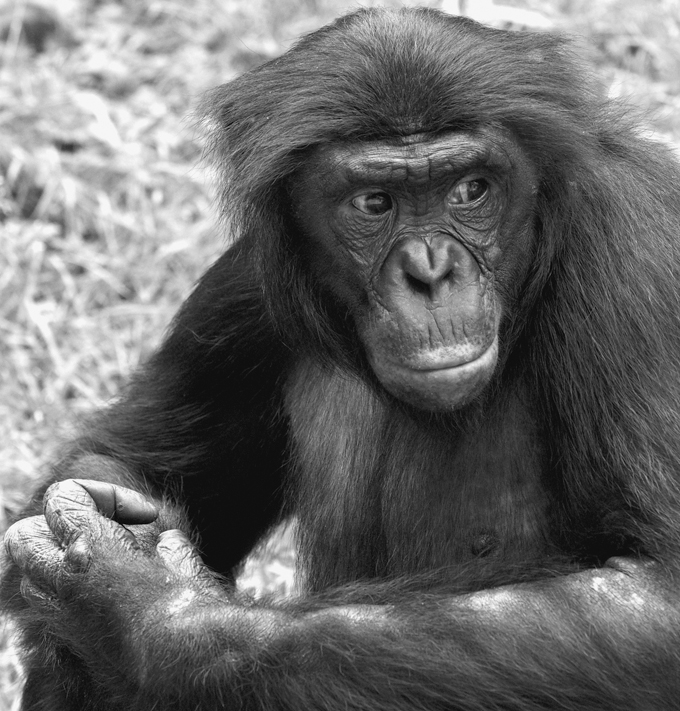
As a three-year-old male bonobo at the Cincinnati Zoo (above), Vic befriended a same-aged boy, who was brought by his father every week to see him. The ape and the child would stare through the glass into each other’s eyes, and were clearly friends, according to the photographer Marian Brickner. She says, “What a dad! I never got his name. I got the picture, actually had to ask him to please step to the left so I could get the right angle.” In 2012, Marian returned to the zoo to obtain an updated portrait of Vic, who is now twelve years old, which makes him a late adolescent.
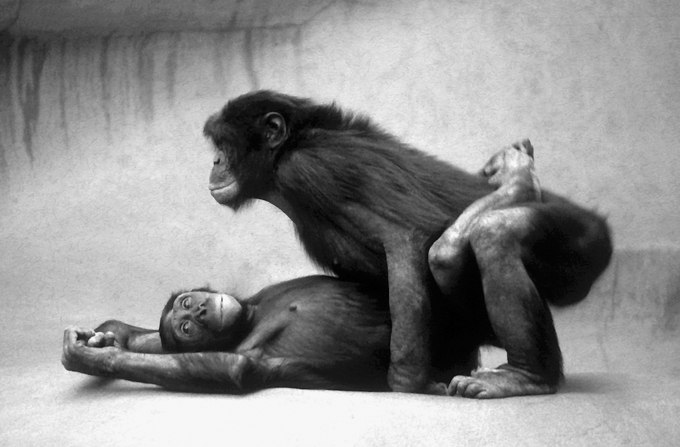
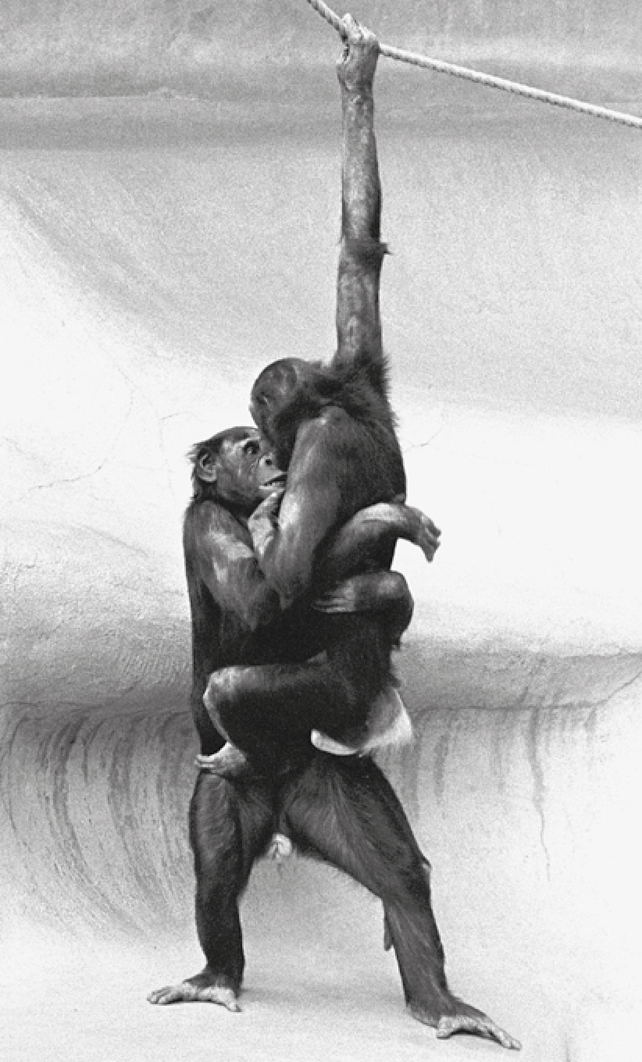
Bonobos have sex in all positions and all partner combinations. Face-to-face copulations are common, such as here by an adult opposite-sex pair (above). Same-sex couplings are common as well, most typically between females. One adult female invites another for genital rubbing. Note the role of eye contact, which is actively sought and maintained during sex.

Mama with her daughter Moniek. For me, this female remains the quintessential monarch of chimpanzee society as she ruled the large Arnhem Zoo colony for decades, even when she could barely walk anymore. She did not physically dominate any adult males, but everyone reckoned with her influence, and males would literally seek refuge in her arms if their rivals were putting too much pressure on them.

The resemblance between ape facial expressions and human ones is illustrated by this laughing chimpanzee. While holding my camera aloft with one hand, I tickle this three-year-old male in his side with the other. He utters hoarse guttural sounds with the same rhythm as human laughter but without the high-pitched shrieks that our species produces. There is no mistaking the sense of fun as he begs for more.
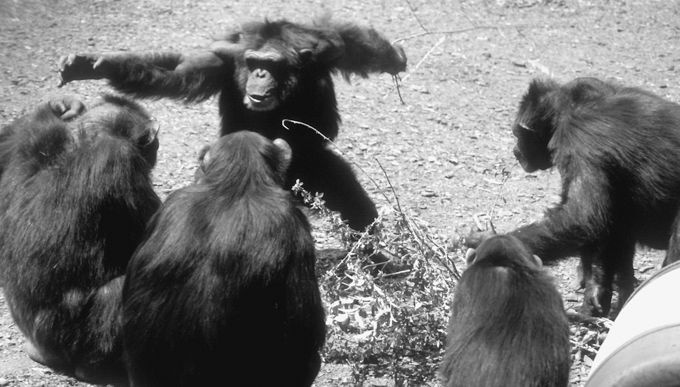
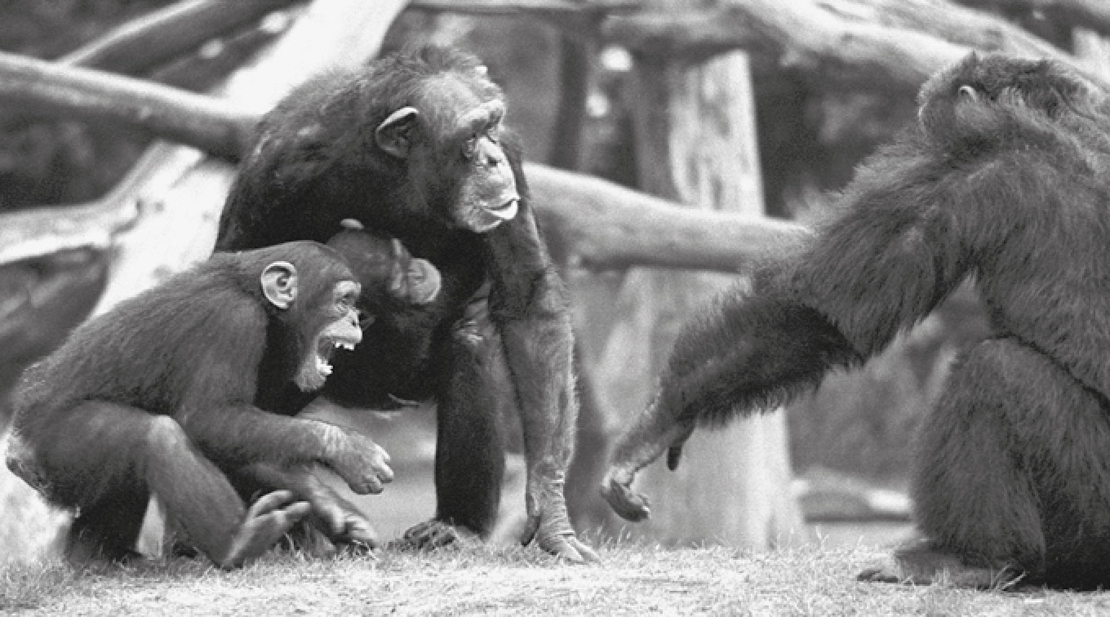
Community concern is reflected in attempts to restore harmony. A high-ranking male engages in impartial arbitration after two females clashed over browse food (top, center). With outstretched arms, he stands between them until the screaming stops. Females also intervene, such as Mama in a conflict between the alpha male and a juvenile. Mama approaches the male with appeasing pant grunts, then guides the juvenile away from the scene.
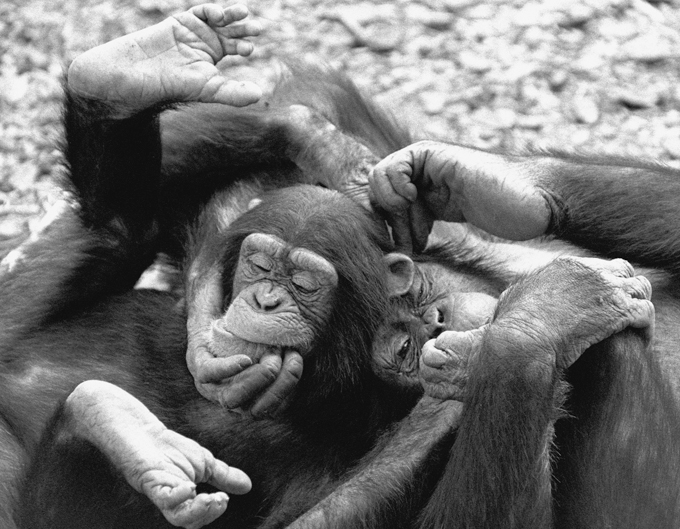
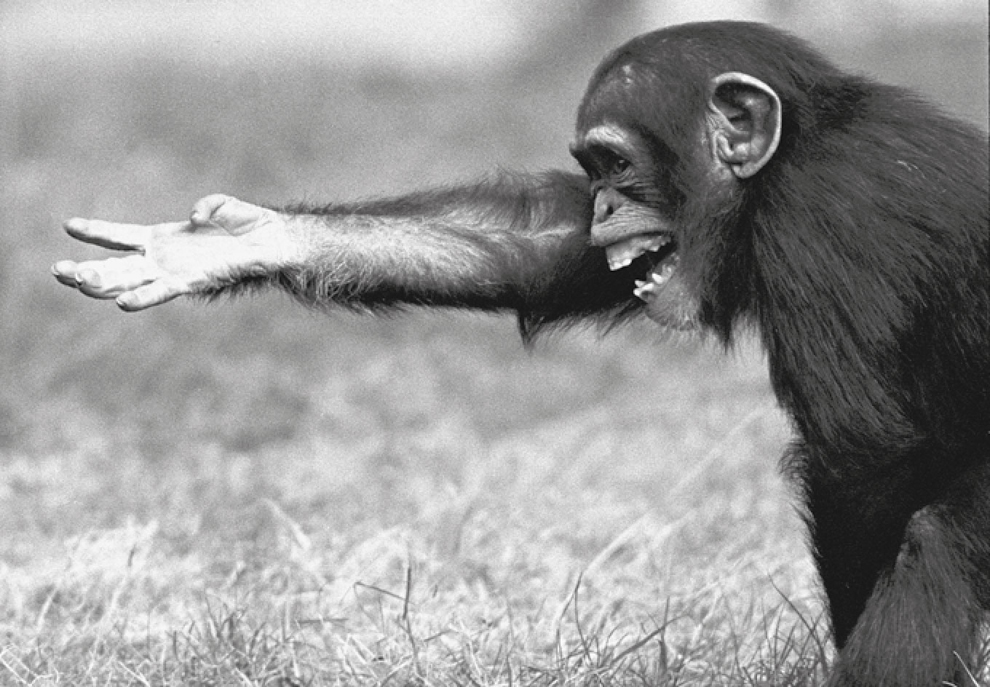
A code of conduct is dictated by the need to get along. Mutual trust is implied during play when young chimps become fully entangled, gnawing on each other’s hands and feet (top). If the game gets too rough, amends will need to be made in order for the fun to continue. Violations of social rules are protested—for example, by a screaming young chimp begging with outstretched hand for the berries someone stole from him.
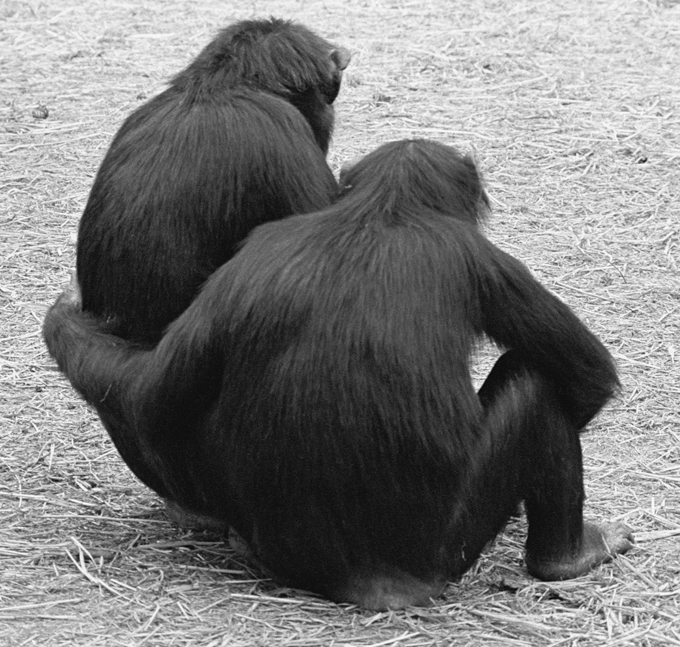
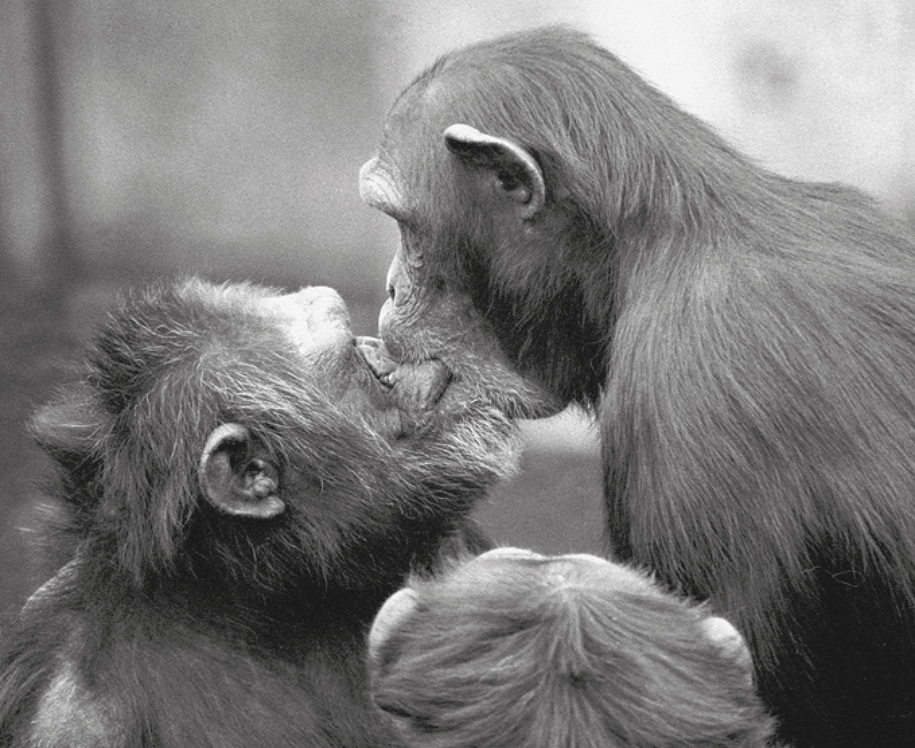
A rich repertoire of reassurance gestures serves to calm others and oneself at times of anxiety. Two female chimps embrace while watching a tense fight within their community (top), and a female makes up with a dominant male, after a fight between them, by kissing him on the mouth.
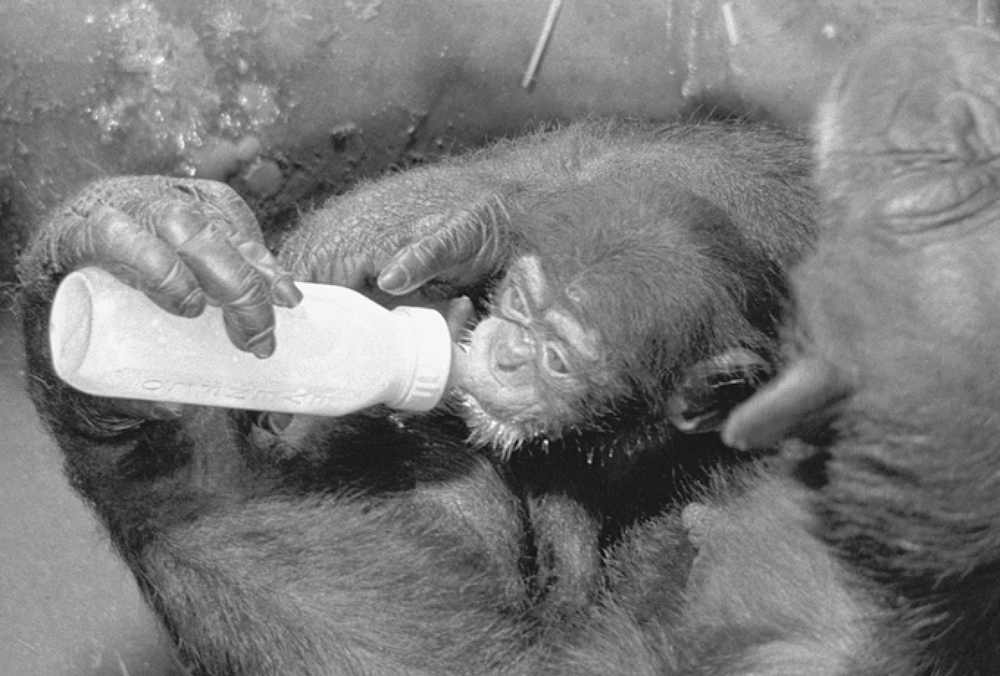
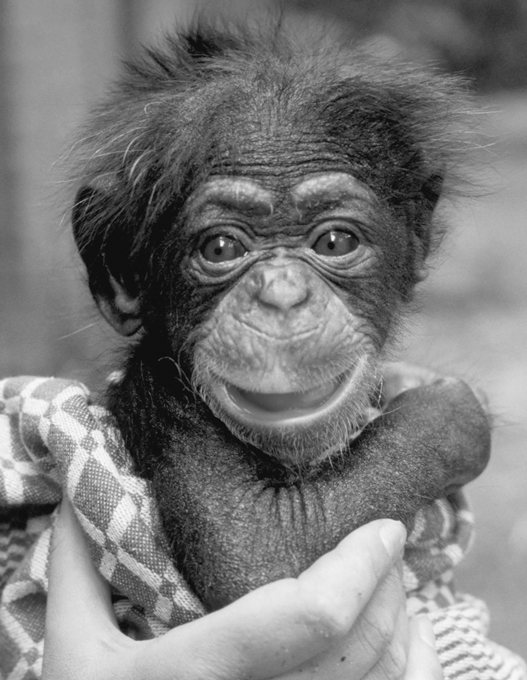
Adopting the young of others is a common form of altruism in both humans and other animals. A female chimp with deficient lactation had lost several offspring before I taught her how to bottle-feed an adopted baby, “Roosje” (right). She raised not only Roosje on the bottle but her own subsequent offspring as well. My lessons earned me this female’s lifelong gratitude.